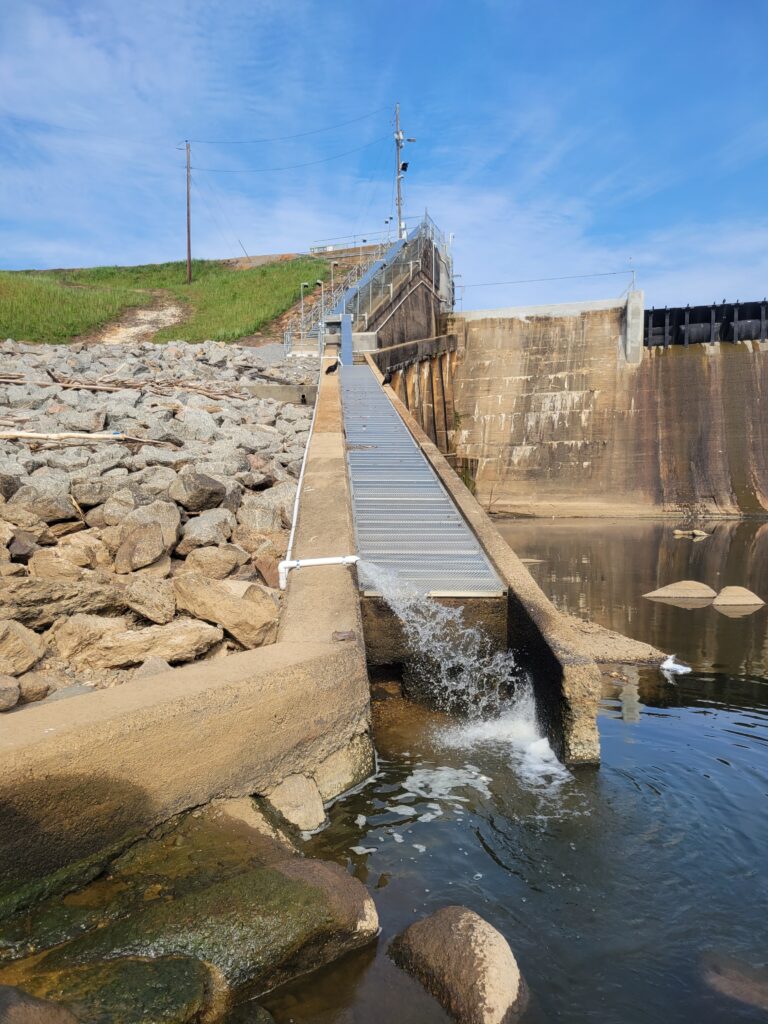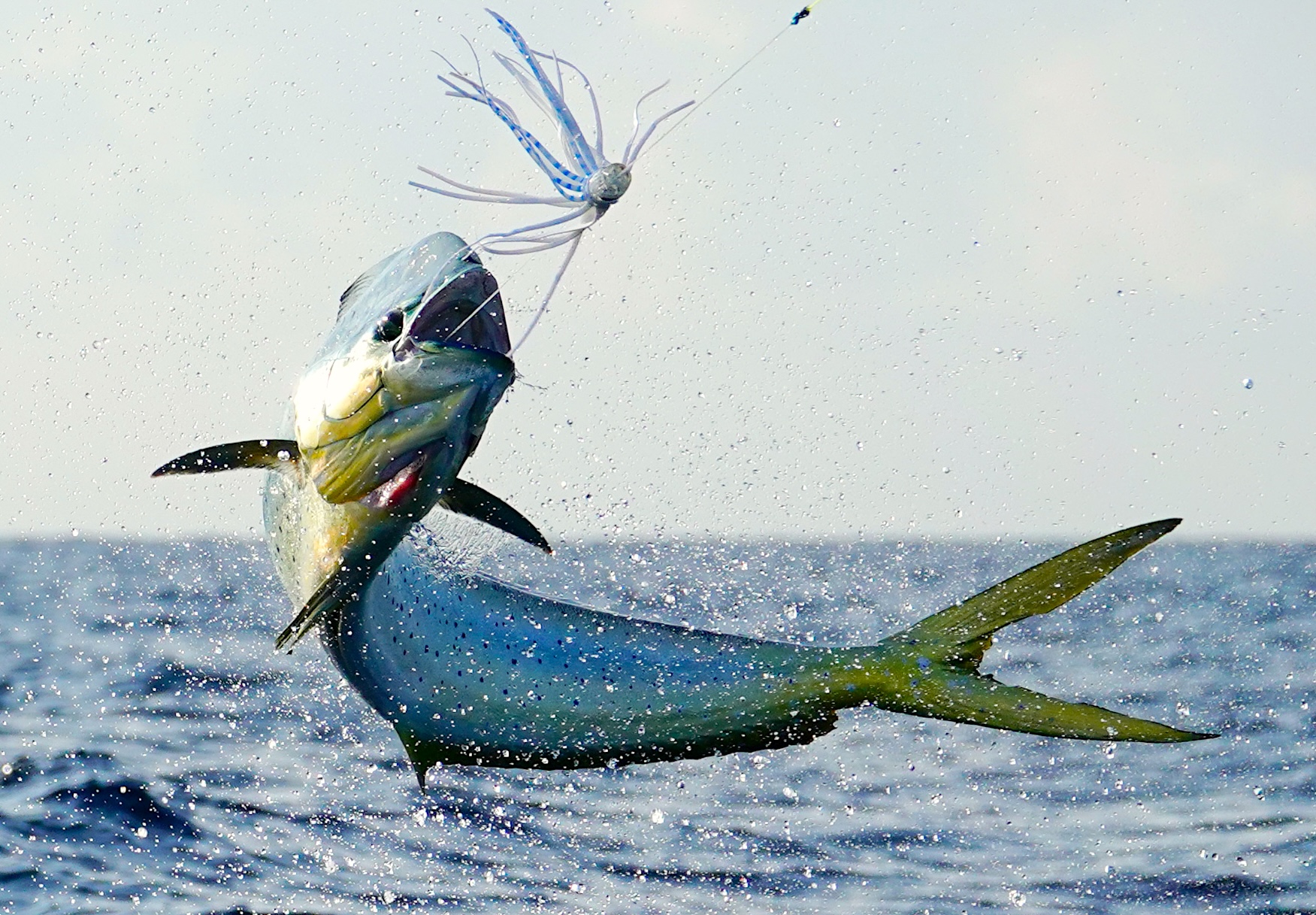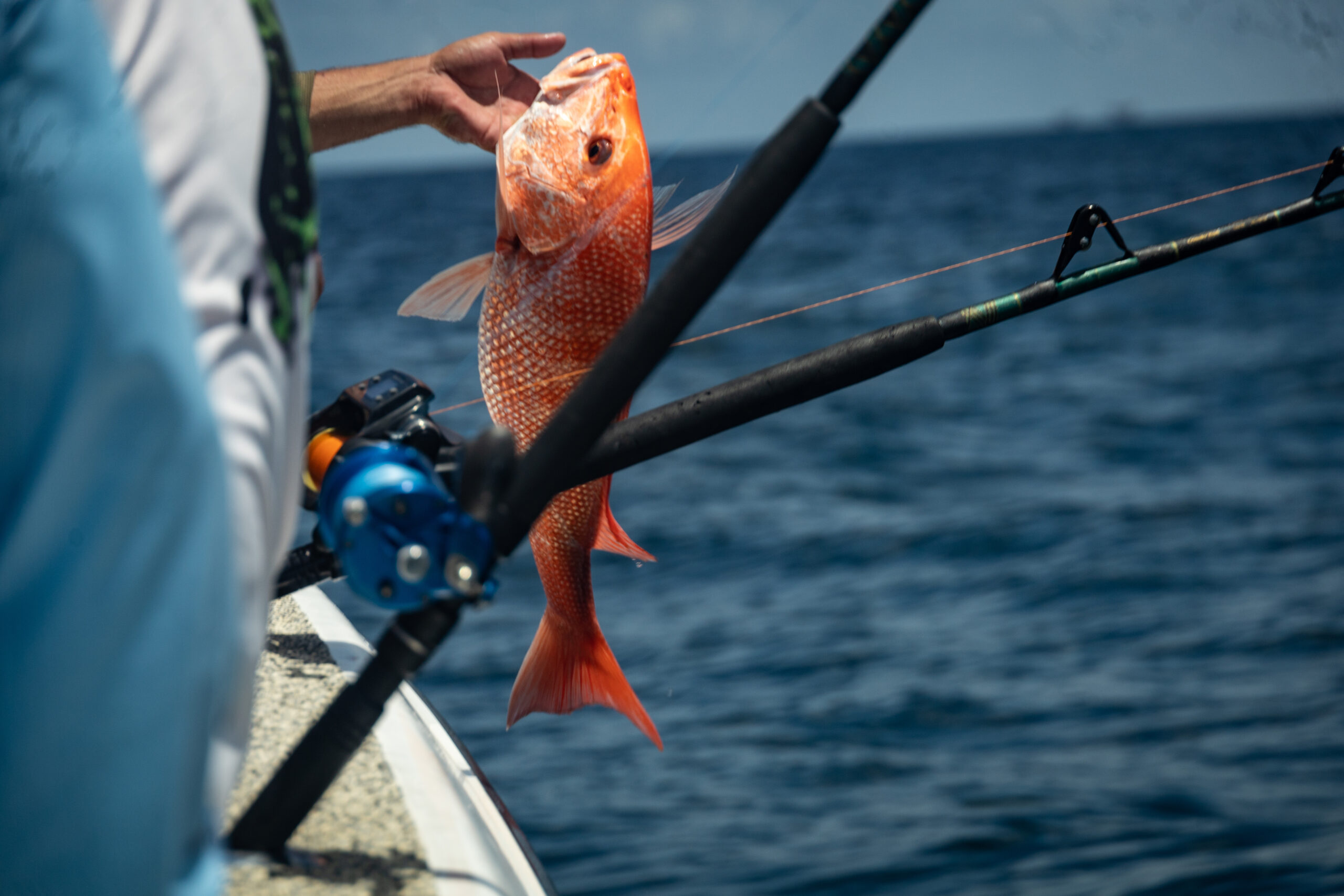1,000 More Miles
New Fish Passage Facilities Restore Access to NC Habitat

Updates at the Blewett Falls Hydroelectric Project now allow American eel and other fish to access previously blocked upstream riverine habitat.
NOAA and the Federal Energy Regulatory Commission have been working with Duke Energy on major upgrades to fish passage facilities along hydropower dams in North Carolina. These upgrades are reopening access to hundreds of miles of upstream spawning and rearing habitat for American eel, American shad, and blueback herring. The work highlights NOAA’s efforts to support migratory fish.
New Plans for Old Dams
On the Pee Dee River in North Carolina, Duke Energy operates the Yadkin-Pee Dee Hydroelectric Project. This includes the energy generating Blewett Falls and Tillery Projects and their associated dams.
Originally built in 1912, the Blewett Falls Project has a long history of generating hydropower for the region. The Blewett Falls Dam is 29 miles downstream of Tillery Dam and almost 200 miles upstream from the Atlantic Ocean. It’s also the first obstacle to fish migrating inland.
In 2015, the Federal Energy Regulatory Commission issued a new license to Duke Energy to operate the Yadkin-Pee Dee Project. Through the relicensing process as part of the Federal Power Act, NOAA Fisheries and partners requested fish passage at both the Blewett Falls and Tillery Projects.
At Blewett Falls, the original dam builders had created a fish ladder, but it was non-functional due to an ineffective design. There were no fish passage structures at Tillery. Through coordination with NOAA Fisheries and partners, Duke Energy began work on fish passage and facility upgrades in 2020.

Innovative Eelway Design
Duke Energy biologists sampled American eel for several years across the base of Blewett Falls Dam to determine the optimal location for a permanent eelway. As it turned out, the best spot was where the original dam builders had created a fish ladder.
Instead of attempting to wend their way up an open concrete fish ladder, the eels now move 95 feet up a custom-designed stainless steel enclosure. The redesign features an attraction flow — a stream of water with a set speed and turbulence, which draws the eels in.
To further entice the eels, the attraction flow contains the scent of eels that have already navigated the eelway. The eels move up the enclosure and land in a collection barrel. From there, staff truck them to a secluded cove in a reservoir above the dam and release them into the 1,000 miles of newly reopened habitat.
The eelway became fully operational in March 2023. That spring, more than 600 eels passed through the structure.
A Passage for Other Fish
Fish passage efforts are also underway for other species, such as American shad, blueback herring, and striped bass. These fish travel upriver to spawn in the spring, when high stream flows tend to occur.
To facilitate this migration, dam operators installed inflatable gates across the length of Blewett Falls Dam to control downstream flows. Unlike the previous gate design, inflatable gates allow for more controlled spills during high flows, lower reservoir level fluctuations, and fewer drawdowns of the reservoir for repairs during the year. A newly cut notch in the dam also allows passage for downstream migrating fish.
Additionally, Duke Energy and NOAA biologists monitored movements of adult American shad in the river for eight years. This information helped them to determine that the best place to build a trap and transport area to later move the fish upriver was in the Blewett Falls tailrace near the powerhouse.
After completion and testing, Duke Energy will begin moving adult American shad and blueback herring from the trap and transport area into the reservoir above the dam. This will allow the fish to continue their upriver migration. Once fish passage improvements are complete at the Blewett Falls Project, partners will begin work on measures for the Tillery Project.
NOAA originally published this story.
- Categories:


